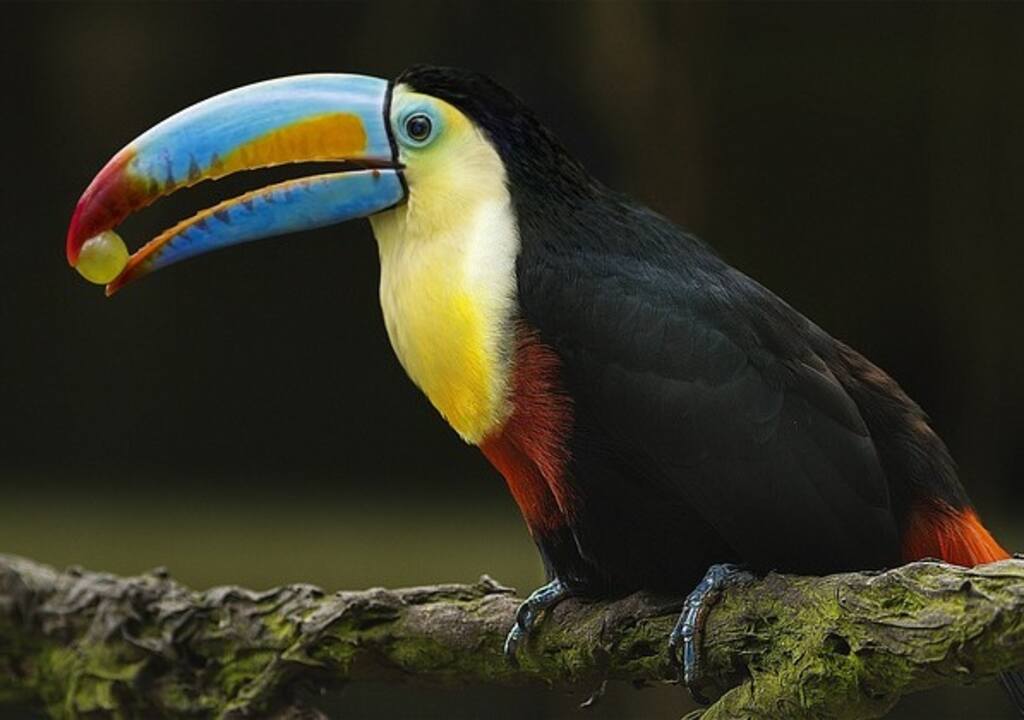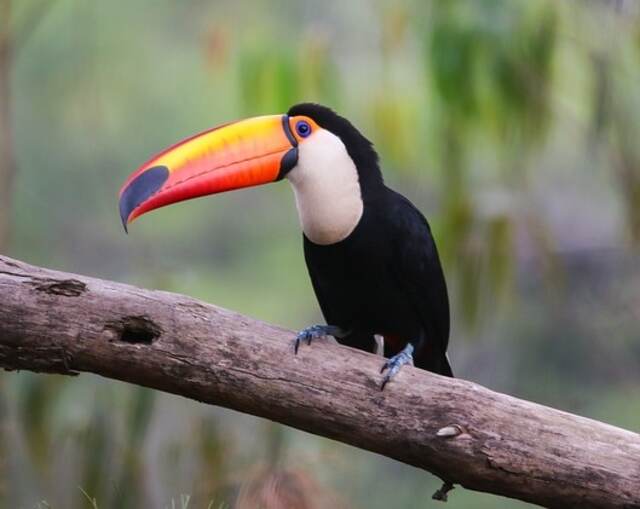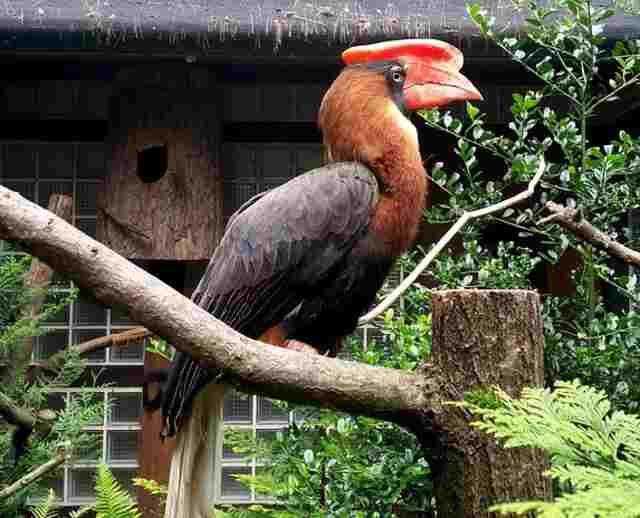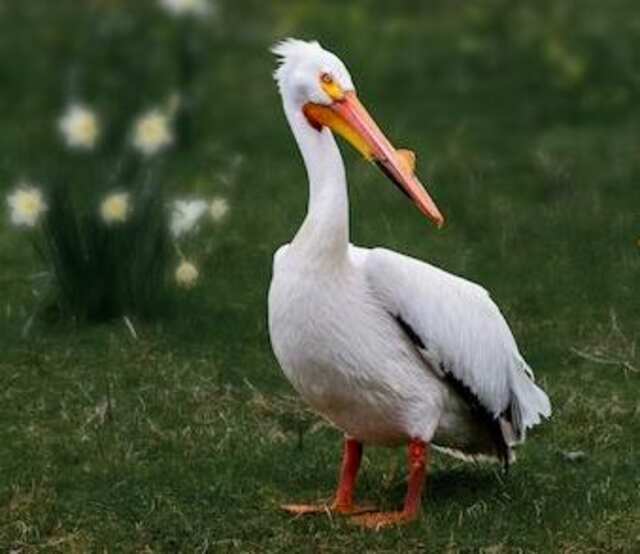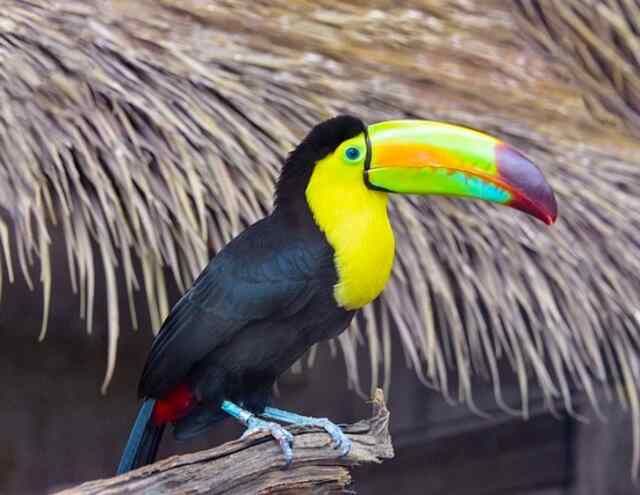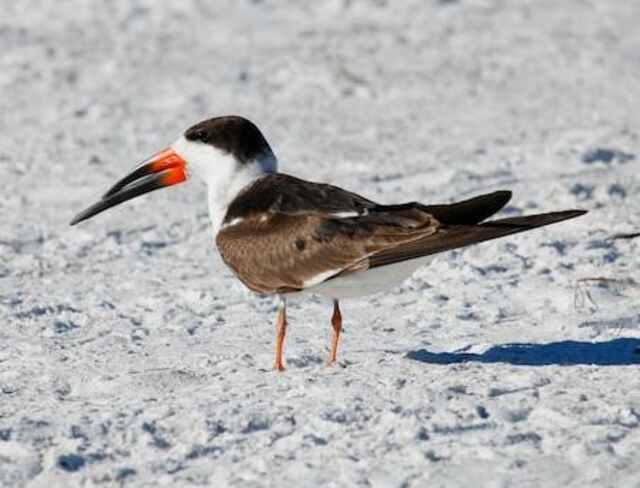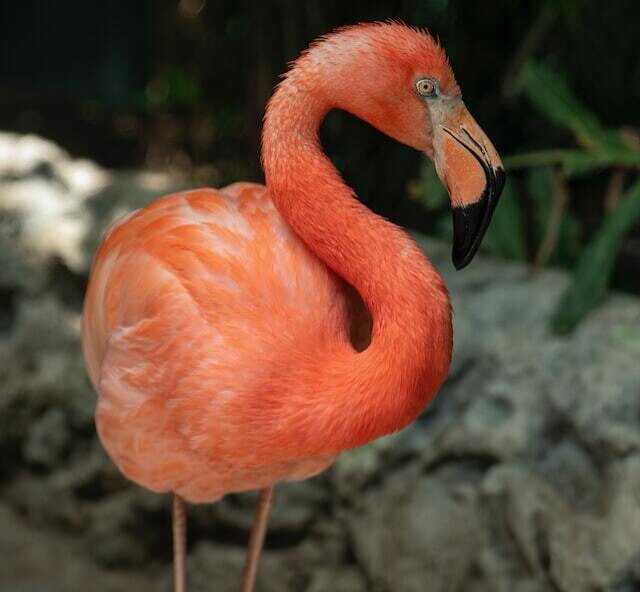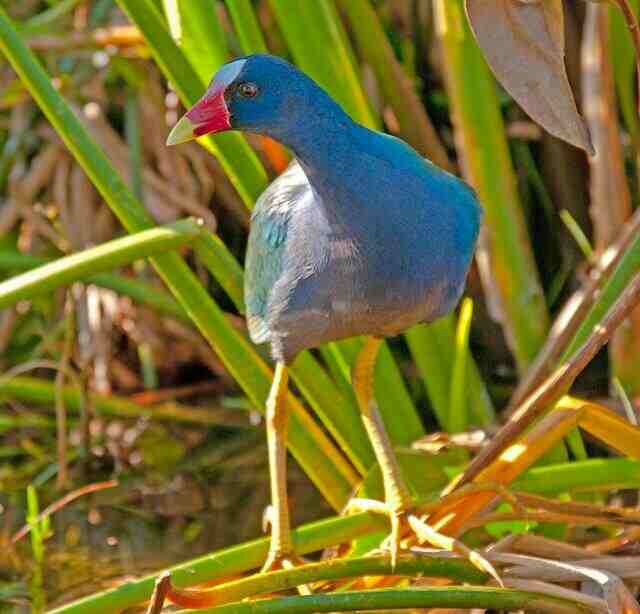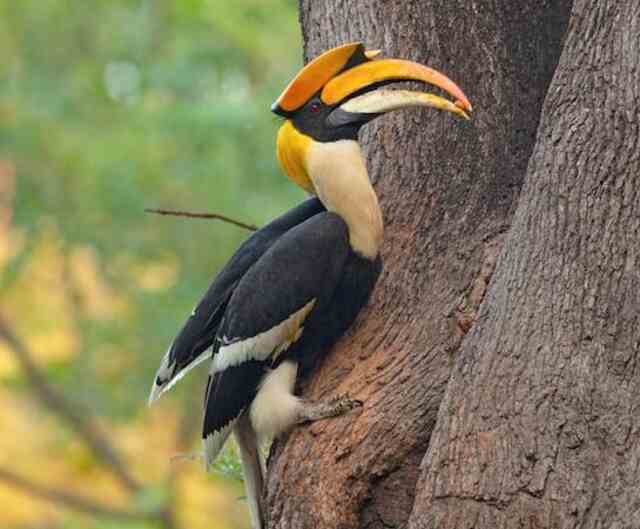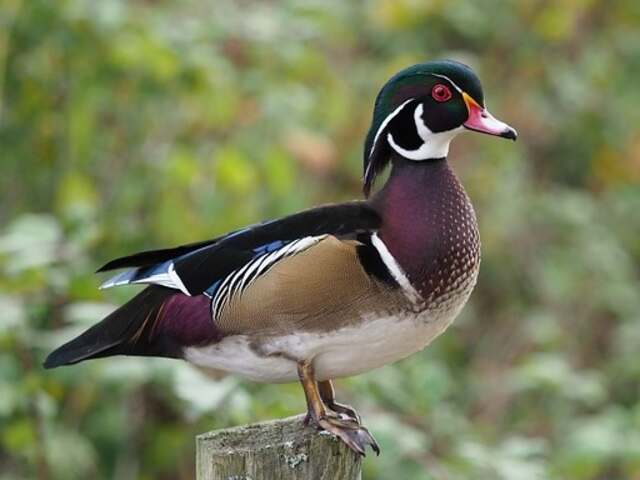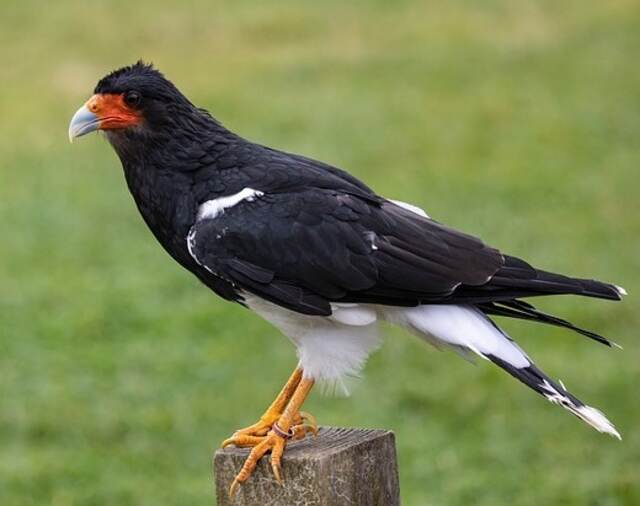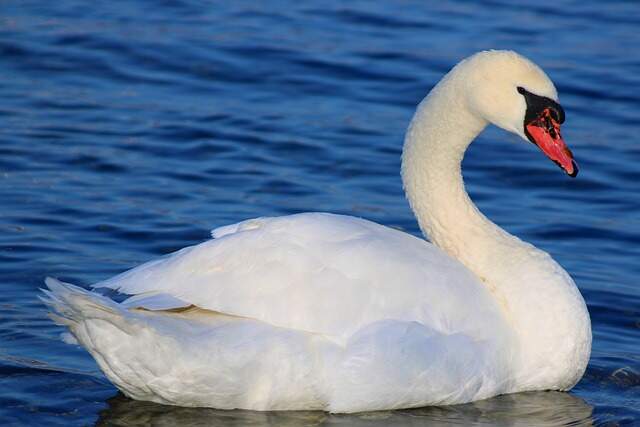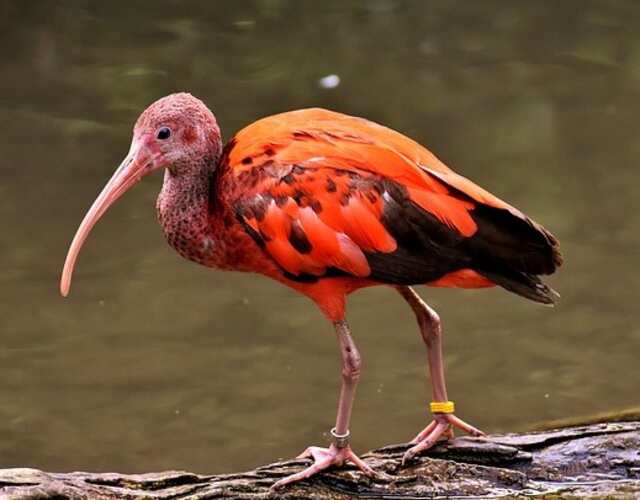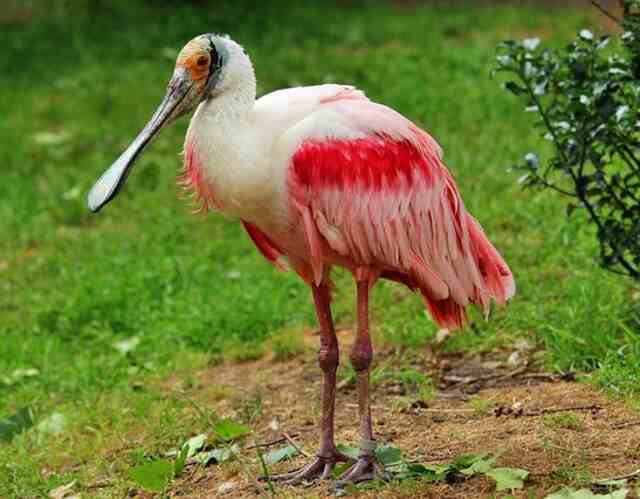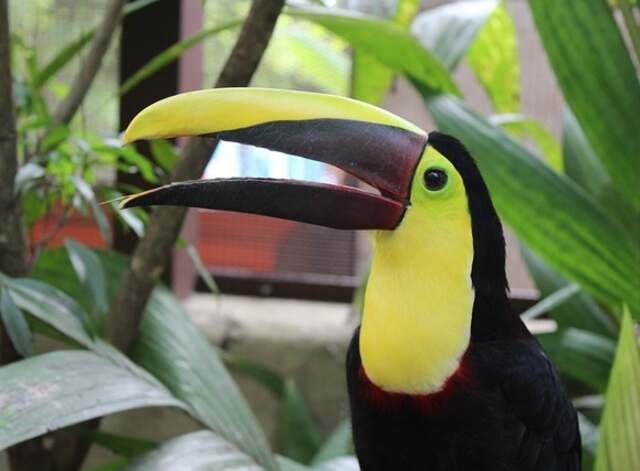Birds with colorful beaks are a fascinating group of birds that have captured the attention of people all around the world. From vibrant toucans to parrots with strikingly detailed beaks, these birds are both interesting and aesthetically pleasing.
The unique colors and patterns of their beaks have even inspired fashion and design trends. But, there’s more to these colorful beaks than just looks. They play a crucial role in a bird’s survival, whether it’s using them to attract a mate, forage for food, or defend themselves against predators.
This article will explore the different types of birds with colorful beaks, the science behind colorful beaks, and the conservation efforts being made to protect them.
Table of Contents
- 1 Types of Birds with Colorful Beaks
- 1.1 Toco Toucan
- 1.2 Rhinoceros Hornbill
- 1.3 American White Pelican
- 1.4 Rainbow Lorikeet
- 1.5 Atlantic Puffins
- 1.6 Keel-billed Toucans
- 1.7 Black Skimmers
- 1.8 American Flamingo
- 1.9 American Purple Gallinule
- 1.10 Great Hornbill
- 1.11 Wood Duck
- 1.12 Bateleurs
- 1.13 Mute Swans
- 1.14 Scarlet Ibis
- 1.15 Roseate Spoonbill
- 1.16 Yellow-billed Toucan
- 2 The Science of Colorful Beaks in Birds
- 3 Birds with Colorful Beaks: Interesting Facts
- 4 Conservation Efforts
- 4.1 The Role of Birds with Colorful Beaks in Ecosystems
- 4.2 Human-Induced Factors Threatening Bird Populations
- 4.3 Deforestation and Habitat Destruction as Major Threats
- 4.4 Combating Intensifying Threats to Bird Populations
- 4.5 Importance of Raising Public Awareness
- 4.6 Protecting Birds from Human-Induced Threats
- 5 Conclusion
- 6 Author
Types of Birds with Colorful Beaks
Toco Toucan
The Toco Toucan is a tropical bird, known for its distinctive and colorful beak. The beak makes up around one-third of the bird’s total body length and is used for a variety of purposes, such as reaching fruit on branches and regulating the bird’s body temperature. The toucan’s range is primarily in South America, including countries such as Brazil, Argentina, and Paraguay.
Toucans are arboreal and can be found in a variety of forest habitats, from tropical rainforests to savannas. Their diet consists mainly of fruits, but they also consume insects, eggs, and small animals.
Due to their feeding habits, toucans play an important role in seed dispersal in their habitats. While deforestation and hunting present a threat to toucans, conservation efforts are in place to protect their populations and habitats.
Rhinoceros Hornbill
The Rhinoceros Hornbill is a large, tropical bird known for its striking, colorful beak. Found primarily in Southeast Asia, including Malaysia, Indonesia, and Thailand, the hornbill inhabits dense rainforests and nests in tree cavities. Its diet mainly consists of fruits and insects, but it will also eat small animals and carrion if available.
The Hornbill’s beak is colored in vibrant red and yellow hues and is used primarily for communication and attracting mates. In addition to its striking physical characteristics, the Rhinoceros Hornbill is known for its unique nesting behavior, where the female is walled up in a tree cavity to incubate and care for her young.
Commercial logging and habitat destruction pose significant threats to this species, but conservation efforts are in place to protect its populations and habitats.
American White Pelican
The American White Pelican is a large water bird that is easily identified by its long, orange beak and bright white plumage. The bird is found throughout much of North America, including parts of Canada, the United States, and Mexico. The pelican’s habitat consists of a wide range of aquatic environments, including lakes, rivers, and wetlands.
The American White Pelican is mainly a filter feeder, with a diet consisting mostly of small fish and crustaceans. The colorful, large beaks of American White Pelicans are used during the breeding season for display purposes to attract mates.
The bright orange color of the beak fades after the breeding season. The pelican is not threatened or endangered, and conservation efforts in some areas, such as the Great Salt Lake, have resulted in increasing populations.
Rainbow Lorikeet
Rainbow Lorikeets, Trichoglossus haematodus, are species of parrots, characterized by their bright, rainbow-colored feathers. They are found in eastern Indonesia, Papua New Guinea, eastern Australia, and neighboring areas. These birds mainly inhabit wet forests, rainforests, and woodlands, but they have adapted to suburban environments, and they are commonly found in urban parks and gardens.
Rainbow Lorikeets primarily feed on nectar, pollen, and fruits, but they also occasionally eat insects and their larvae. Their vibrant-colored beaks are used to help them access their food sources, as they have a specialized tongue that can extract pollen and nectar from flowers.
The bright colors of their feathers and beaks provide camouflage, enabling them to blend into their colorful surroundings, and also helping with mate selection. Rainbow Lorikeets are known for their playful and inquisitive personality, making them a popular companion pet among bird enthusiasts.
Atlantic Puffins
The Atlantic Puffin (Fratercula arctica) is a small, colorful seabird with black and white feathers and a brightly colored beak. They are found in the North Atlantic, breeding on rocky cliffs and islands. Atlantic Puffins have a varied diet that consists mainly of small fish and marine invertebrates.
Their vibrant beaks play an essential role in their breeding, communication, and feeding, allowing them to carry multiple fish at once to their young. Puffins’ beaks are also used for mate selection, as the bright colors indicate health and fitness.
These comical birds have adapted to live in harsh, remote environments and are well known for their unique and endearing personalities, making them a favorite among birdwatchers and wildlife enthusiasts.
Keel-billed Toucans
The Keel-billed Toucan (Ramphastos sulfuratus) is a colorful bird found in Central and South America, inhabiting forests and woodlands. Their diet primarily consists of fruit, but keel-billed toucans also eat insects, eggs, and small vertebrates. The distinctive feature of the keel-billed toucan is its large, colorful beak, which is used for balance and foraging.
The vibrant colors on their beak play a crucial role in species recognition, mate selection, and communication. While the exact function of the colors on their beak is still debated, it is believed that it may help to deter predators or indicate health status.
These social birds are known for their playful and curious nature, making them a popular subject for birdwatching and ecotourism.
Black Skimmers
The Black Skimmer is a bird species with distinct characteristics such as a laterally compressed, bright orange-red bill, long wings, and forked tail. It has black upperparts and white underparts, with a black collar visible in non-breeding adults. The Black Skimmer is found in coastal areas of America, from Massachusetts to Argentina, primarily along the Atlantic coast.
It nests in sandy beaches, riverbanks, and mudflats. This bird feeds on small fish and mollusks, using its bill to skim the water surface for prey. The bright colors of its bill are believed to help it locate prey in low light conditions.
Black Skimmers are also skilled fliers, capable of foraging in groups over large areas of water. Overall, Black Skimmers are interesting waterbirds with a distinctive appearance and adaptability to coastal habitats.
American Flamingo
The American Flamingo is a colorful bird, with bright pink feathers and a distinctive downward-curving beak. It is found in the tropical regions of North, South, and Central America, as well as the Caribbean. The habitat of the American Flamingo is wetlands, lagoons, and mudflats. Its diet mainly consists of small crustaceans, plankton, and algae.
The bright color of its beak is due to the presence of carotenoid pigments in its diet. These pigments are broken down and absorbed by the flamingo, leading to the development of its colorful plumage.
Overall, the American Flamingo is an iconic species that has adapted to a specific diet and habitat, resulting in its unique characteristics.
American Purple Gallinule
The American Purple Gallinule is a medium-sized bird found in the wetlands of tropical and subtropical areas throughout North America. It has an unmistakable appearance, with its greenish-purple plumage on its body and wings. Its most striking feature is its bill; yellow and red in color, which helps it feed on snails, frogs, insects, fish and plants.
Its range stretches from Mexico to Florida and up the Mississippi River into parts of Canada. It usually lives in swamps, marshes, lakesides or rice paddies near water sources.
Its diet consists mostly of aquatic vegetation as well as mollusks, crustaceans and amphibians. The colorful beak helps it spot food under murky waters, while also serving as a warning sign to other animals of potential danger.
Great Hornbill
The Great Hornbill (Buceros bicornis) is a species of large, brightly coloured bird with a distinctive casque on its beak. It is found in tropical and subtropical forests throughout Southeast Asia. In terms of size, the Great Hornbill can reach up to one meter long and weigh as much as 4 kg.
Its diet consists mostly of fruit, insects, small animals and reptiles. The hornbill’s coloring is also quite striking – it has black feathers with yellow around the neck, white tips on its wings, and a bright yellow or orange bill with a reddish-brown helmet-like structure called a “casque”.
The purpose of this casque is to resonate the loud call that it makes during mating season. This bright coloring helps attract potential mates for the species, and thus plays an important role in their continued survival.
Wood Duck
The Wood Duck (Aix sponsa) is a medium-sized dabbling duck found across North America. They inhabit wooded areas, such as swamps and rivers, as well as shallow wetlands. Their diet consists mainly of aquatic invertebrates, but they will occasionally feed on grain or fruit in cultivated fields.
Male wood ducks are noted for their striking plumage, which includes a brilliantly colored beak, iridescent teal feathers with white markings and deep red eyes. Female wood ducks have more muted colors, but the same multicolored beak and reddish eyes.
The colorful bill is used to attract mates during courtship displays and for visual communication with other members of its species. Wood Ducks range from southern Canada to Mexico and from California to Florida throughout the year.
Bateleurs
The Bateleur is a raptor found in the open grasslands, savannas and woodlands of sub-Saharan Africa. These birds have an impressive wingspan ranging from a modest 1.2 to 2 meters, with males being larger than females. They exhibit striking coloring, with black plumage on top and a brightly colored beak – usually red, but sometimes yellow or orange.
Their diet consists mostly of small mammals, reptiles and insects, as well as carrion. Its long tail helps it maneuver in flight, while its curved beak is perfect for tearing flesh.
The beak gets its coloration because of the presence of carotenoids which aid in the digestion of certain foods which may otherwise contain toxins that could cause harm if consumed.
Mute Swans
The Mute Swan is a species of large waterfowl native to Eurasia. They have a mainly white plumage and an orange beak, which is sometimes tipped with black. Their range spans from the UK to Siberia, and they are found in freshwater lakes, ponds, marshes and some coastal regions.
As their name suggests, Mute Swans are generally silent, but will sometimes honk when alarmed or threatened. They mostly feed on aquatic vegetation and mollusks, although they also eat small fish and invertebrates.
The color of their beaks serves as a form of sexual dimorphism; males possess more colorful beaks than females. This helps them attract mates during breeding season, as well as signal dominance over other swans.
Scarlet Ibis
The Scarlet Ibis is a unique bird that can be found in the tropical and subtropical regions of South America. It has a distinct red and black plumage, with its namesake scarlet-red bill being its most defining feature. This beak serves a multitude of purposes, ranging from attracting mates to aiding in prey capture. Diet wise, they are known to consume insects, small fish, mollusks, and other invertebrates.
Scarlet Ibises inhabit wetlands like lagoons, brackish marshes, mangrove swamps as well as adjacent grasslands or shrubland areas. Their bills play an important role in their habitat choice; they use them to probe mudflats covered with shallow water for food such as worms and crustaceans.
Furthermore, these birds also rely on their bills to preen themselves; typically by scraping the insides of their bills against branches or twigs to remove parasites from their feathers. Additionally, colored beaks provide a form of camouflage which helps the species blend into their environment.
Roseate Spoonbill
The Roseate Spoonbill, a large wading bird native to the Americas, is most easily recognizable by its distinctive spoon-shaped bill that is uniquely colored in shades of red and pink. Its range includes coastal parts of the United States from Texas to South Carolina, as well as Central America, the Caribbean and parts of South America.
It inhabits wetland areas such as swamps, lagoons, mangroves and mudflats, where it feeds on aquatic animals such as crustaceans and small fish. The colorful beak serves many purposes; it helps them locate food underwater by detecting movement and vibrations as they stir up sediment while filtering out water with their beaks.
The bright colors may also serve to frighten off predators or attract mates. Additionally, some experts believe that they help prevent sunburn while preening feathers. As an important species in many ecosystems throughout its range, the Roseate Spoonbill serves to maintain balance within these areas through their actions as a filter feeder.
Yellow-billed Toucan
The Yellow-billed Toucan (Ramphastos sulfuratus) is a large species of tropical bird belonging to the Ramphastidae family. This toucan can be found in Central and South America, from Mexico down to Argentina and Uruguay. They inhabit tropical rainforests, woodlands, mangroves, and savanna habitats.
The Yellow-billed Toucan has a vibrant yellow bill that contrasts with its black body and white throat. It also has elongated feathers on its head that look like a crest. Its diet consists mainly of fruits, but it also eats insects like grasshoppers, beetles, caterpillars, lizards and small birds’ eggs.
The color of the bill helps it identify ripe fruits from unripe ones, since many fruits ripen to bright colors such as yellow or red. The beak is also used for breaking open hard shells of nuts or fruit and for climbing branches during courting displays.
The Science of Colorful Beaks in Birds
Many bird species have brightly colored beaks, which play a crucial role in their lives. The science behind the colorful beaks is complex and multifaceted, with pigments playing a key role in creating a wide range of different colors and hues.
Pigments and Carotenoids
Pigments are natural compounds that produce and create specific colors in organisms. In birds, they are created by pigments called carotenoids, which are also responsible for red, orange, and pink colors found in the beaks of other birds such as flamingos and pelicans.
Some birds, like the American Goldfinch, can only obtain carotenoids from the food they eat, so the brighter their beaks are, the better they are at obtaining their necessary nutrients.
Attracting Mates and Deterring Predators
Colorful beaks not only serve to attract mates, but also to attract prey. For example, the toucan’s large colorful beak serves as a deterrent to predators by making them look bigger and less vulnerable than they actually are. The color of a bird’s beak can also impact its mating success and overall survival.
In some species, males with more colorful beaks are more attractive to females, because the brighter beaks are a sign of good health and genetic quality. Similarly, beak color can also play a role in signaling dominance and aggression, as well as in camouflage and foraging.
Impact on Health and Well-Being
Furthermore, studies have shown that there are strong links between beak coloration and the overall health and well-being of birds. In particular, the level of carotenoids in a bird’s beak is often a good indicator of its nutritional status and overall health.
For example, researchers found that the orange coloration of beaks of blackbirds was a sign of higher immune system activity, indicating that more colorful beaks might be an indicator of overall health.
Birds with Colorful Beaks: Interesting Facts
Birds with colorful beaks are some of the most eye-catching creatures in the animal kingdom. They range from vibrant blues and greens to reddish oranges and yellows, each with its own unique hue.
Many birds have evolved colorful beaks for a variety of reasons, including protection from predators or to attract potential mates. Here are some interesting facts about birds with colorful beaks:
- Birds use their beaks to create different sounds as part of their mating ritual. The bright colors may help them attract mates by making them more visible during courtship displays among potential suitors.
- In some cases, the color of a bird’s beak can indicate the type of food they eat. A hummingbird, for example, has a long tube-shaped bill that allows it to efficiently extract nectar from flowers; its red or orange bill helps it stand out from other species who might share similar habitats and compete for food sources.
- Some birds have evolved their beaks into specialized tools used to capture prey or defend themselves against predators. The toucan’s oversized bill is primarily used for hunting small animals like insects, lizards or frogs; meanwhile, raptors such as hawks and eagles have curved talons designed specifically for plucking fish out of water or snatching small mammals off the ground.
- The brightly colored bills of many tropical birds may also serve to startle predators; they appear much larger than they actually are when viewed up close! Even if the predator is able to catch up with its prey, its eyes will likely end up being hurt by all the bright colors radiating from the bird’s impressive looking beak!
- Finally – and perhaps most importantly – colorful bills play an important role in mate selection among many species of birds. Because certain colors can signify certain traits (e.g., strength, intelligence) potential partners may choose mates that exhibit these characteristics through their striking bills!
Conservation Efforts
The Role of Birds with Colorful Beaks in Ecosystems
Birds with colorful beaks play a significant role in maintaining the delicate balance of many ecosystems. Their populations have been declining due to human-induced factors, such as habitat loss, pollution, climate change, and overharvesting.
Human-Induced Factors Threatening Bird Populations
Apart from the colorful beaks, not all bird species play a vital role in the ecosystem. However, it should be noted that over time, human-induced factors have taken a significant toll on bird populations.
Deforestation and Habitat Destruction as Major Threats
Deforestation and habitat destruction are among the significant threats to bird populations, including the bird species with colorful beaks. They not only lose access to food and other resources, but also their living space.
Combating Intensifying Threats to Bird Populations
To combat the threats faced by birds, steps such as creating protected areas, and establishing conservation organizations can help reduce the impact of human-induced factors. Research into bird behavior and management practices that promote healthy populations can also help build robust populations of threatened species.
Importance of Raising Public Awareness
Raising public awareness about the threats to birds and the critical role they play in ecosystems is essential. By educating individuals, communities and promote action to protect these unique species and the habitats they rely on.
Protecting Birds from Human-Induced Threats
By protecting bird populations and their habitats from human-induced threats, we can help safeguard the ecosystems of which they are an integral part.
Conclusion
In conclusion, this article has explored the beauty of birds with colorful beaks and why their conservation is important. We have discussed how these birds have adapted to their environments in order to survive, and how they rely on the ecosystem for survival.
We have also discussed the human impact on their habitats and how it has threatened their existence over time. Furthermore, we have seen that these birds play a vital role in maintaining biodiversity and must be protected if we are to ensure the health of our planet.
Related Post:

